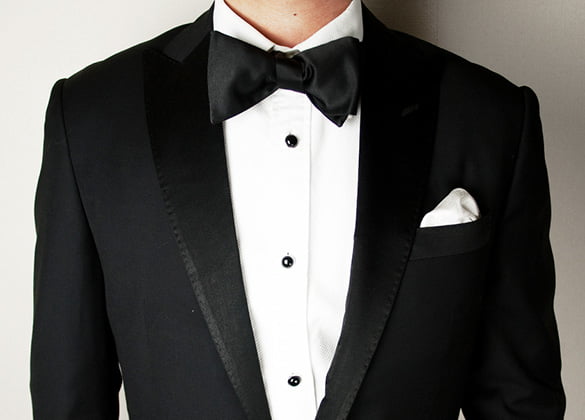
Today white tie is worn in the evening at certain royal ceremonies and balls, and state and livery dinners. White tie may also be specified for formal evening weddings and for some charity balls. It is also the dress code for some Highland balls, for those men not entitled to wear the kilt. It is no longer seen at the theatre or opera, and opera cloaks and silk top hats, along with canes and white gloves, are now only seen on stage.
'White tie' will always be stated on the invitation itself. Many organisations hosting events will say 'white or black tie', as they are aware that the former may be difficult for some invitees.
- A black single-breasted tailcoat in black wool (barathea) or ultrafine herringbone with silk peaked lapels, often grosgrain (worn unbuttoned). The coat is shorter at the front than a morning coat.
- Black trousers with a natural taper and two lines of braid down the outside leg.
- A white marcella (cotton piqué) shirt with a starched detachable wing collar and double cuffs.
- Cufflinks and studs. The shirt will usually be closed with studs rather than buttons. These may be plain white or decorative.
- A low-cut, white marcella evening waistcoat (double or single-breasted).
- A thin, white hand-tied marcella bow tie.
- Highly polished or patent black lace-up shoes, worn with black laces (traditionally ribbon) and black socks.
- In winter, a black overcoat and white silk scarf may be worn.
- Full-length, formal evening dresses. It is traditional, but not essential, to show décolletage. Shorter dresses or trousers, no matter how smart, are not acceptable.
- Jewellery can be striking; this is the time for the finest jewels and gems, including tiaras. Traditionally these were worn for the first time by brides, and it is incorrect for young girls to wear tiaras on any occasion.
- Evening bags should be small and elegant.
Long evening gloves are traditionally worn at balls and dinners when the dress code is 'white tie' but are no longer compulsory at many events. They work best with sleeveless dresses but older women may wear them with cap or short sleeves. With long sleeves it is better to dispense with gloves, rather than wear short ones. Gloves should be worn en route to an event, in a receiving line, when shaking hands and dancing. They are removed when eating (even a canapé) and at the dinner table – they should be taken off finger by finger and rested on the lap under the napkin.
For formal evening events, daytime coats look out of place. A smart evening coat, cloak, pashmina or wrap in a suitable material is preferable.
An alternative to white tie on certain occasions may be national costume, for example Indian, Chinese or Arabian. This will usually be stated on an invitation.
Certain societies or clubs may give balls at which their own evening dress coats are worn (usually coloured tail coats, red, blue or green, with special facings). These are worn with a white tie and waistcoat, but often with ordinary dinner jacket trousers. Non-member male guests, not entitled to the club coat, usually wear black tie.
The dress code 'full-dress ceremonial' is occasionally seen for very formal or state occasions. For evening this may usually be interpreted as white tie for civilians but it is important to ask and check with the host or organiser. For daytime events such as state funerals it can mean dress uniform for those in the services, robes for peers or judges, or particular vestments for clerics, and usually morning dress or simple business attire for others.
If it is white tie dress code and the event is a royal or state occasion, or a very formal event in, say, the City, then the dress code may state 'Evening Dress—Decorations'. It is correct to wear decorations in the presence of The King but very unusual to wear them at a private event or charity ball, however grand. It would generally be more of a mistake to wear them than not to do so.
If decorations are asked for, then knights and dames should wear the most senior chivalric orders to which they belong rather than all their decorations. Stars such as the Garter or Thistle are displayed on the left side of the evening coat or dress. Knights Grand Cross of an order may also wear a sash and badge. There are also medals that may be worn on a ribbon round the neck, just below the tie. Others may be worn as miniatures on a bar, and this is also usual when the dress code is black tie and decorations.
In practice, ex-service people are usually familiar with the wearing of medals, as are members of orders. If in doubt when attending a royal event then the best thing is to ask the Palace or relevant private secretary. It goes without saying that no one should wear decorations to which they are not entitled. Even as fancy dress these may give offence, for example to genuine veterans, so treat with care.
- A black wool (barathea) or ultrafine herringbone dinner jacket, single-breasted or double-breasted with no vents, silk peaked lapels (or a shawl collar) and covered buttons. White dinner jackets were traditionally worn in hot climates but not usually in Britain, even in the summer.
- Trousers are black with a natural taper, and a single row of braid down each outside leg.
- A white evening shirt, with a marcella collar, bib and double cuffs, with a turn-down collar (not a wing-collar), worn with cufflinks and studs. A plain silk shirt with buttons may be worn but any kind of ruffles or frills should be avoided. Alternatively, a fly-fronted shirt, where the buttons are concealed, is acceptable. Adults should avoid novelty shirts and ties.
- Studs may be black or decorative.
- A black hand-tied bow tie (avoid ones which are pre-tied). The size of the bow tie should be proportionate to the size of the wearer.
- Black highly polished or patent lace-up shoes and black silk socks.
- Cummerbunds are not considered essential but may be worn. A matching tie and cummerbund in a non-conventional shade (pastels rather than burgundy and black) should be treated with caution.
- Waistcoats may be worn although they are not seen very often. They would always be considered a smart option. A waistcoat and cummerbund are never worn together.
- A white handkerchief in the left breast pocket is a classic detail.
In the country for dinner parties with neighbours, and especially in his own home, a man may wear a velvet smoking jacket, usually navy blue, burgundy or dark green, with a black bow tie, dinner jacket trousers and evening slippers. While this dress is acceptable for the host, it would not be right for a guest to wear this for an event with the dress code black tie actually stated on an invitation, which effectively means a dinner jacket.
Evening slippers, sometimes monogrammed or crested, may be worn and are more often found in the country.
Unless national costume is specified the usual form would be 'when in Rome' but in practice smart equivalent dress from a person's home country – for example an Indian Nehru jacket or Arabian robes – may be acceptable.
A fashionable interpretation of black tie, when a black tie instead of a bow tie is worn with a dinner jacket, is often referred to as 'Hollywood black tie'. For most formal private black tie events in Britain this would look unsuitable.
- Women should wear an evening dress or skirt; long, or at least not very short, is usually best. There is a difference between a formal dinner and a dinner dance; avoid wearing voluminous dresses for a dinner because they're not practical. However very tight 'red-carpet' dresses or those with a dramatic split, while stunning when making an entrance, can be uncomfortable or inappropriate at a formal event that involves both a reception and a sit-down dinner.
- If not wearing a long dress, then a cocktail dress – a fitted dress to very slightly below the knee and with a little décolletage – is an option. The fabric should be suited to evening such as silk, crepe or chiffon.
- Evening trousers are an option, but it is better to go for a palazzo cut, rather than tight-fitting. Flowing, ethnic-inspired tunic tops with trousers may be worn if the event is at the less formal end of the spectrum. If in doubt, consult the hostess.
- Although the dress code is 'black tie', dresses need not be black. Equally, wearing black does not ensure the right level of formality.
- Tights should be worn, black or sheer.
- Fine or costume jewellery is appropriate, but not tiaras.
- An elegant evening bag should be used.
- Ideally, an evening coat should be worn, as for white tie.
Parties often do not fit into the more traditional formats of white tie, black tie or smart casual. They may even be fancy dress. The key thing is to change for the event and not to wear work clothes. When an event is themed it may be hard to judge the formality, so take on board the style of event, as indicated by the invitation and the venue, and ask the host. It is now also acceptable for men at relaxed, yet formal, evening events to wear a velvet jacket, Nehru-collared jacket or moleskin suit with an open-necked party shirt. Shirts may feature non-formal prints – for example small flowers – and brighter colours. These jackets and shirts may be coupled with smart dark-coloured jeans or trousers. Such combinations indicate an effort has been made, whereas a dark suit may indicate that a man may not have tried to put together an evening look.
Women should make it clear that an effort has been made. Theme parties can be a minefield. While it is good manners to make an effort and disrespectful to ignore hosts' requests, that doesn't necessarily mean, for example, hiring a full theatrical outfit or feeling miserable all evening. At the very least, well chosen accessories or jewellery can indicate the style or period required.
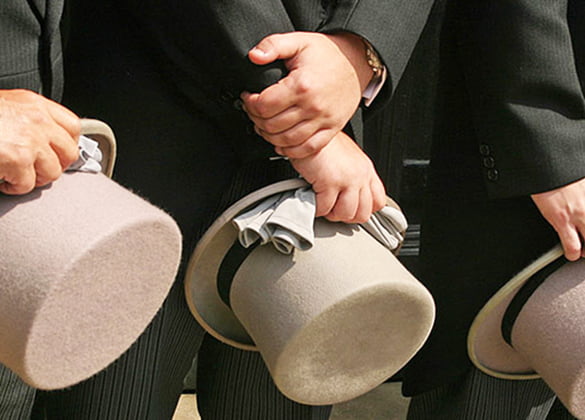
- A black or grey matt morning coat, single-breasted with peaked lapels, curved front edges sloping back into tails.
- Trousers are grey or grey and black-striped.
- A white or light-coloured shirt with a white turned-down collar, double-cuffs and cufflinks.
- Waistcoats are usually buff, grey or duck-egg blue and double or single-breasted. Double-breasted waistcoats may have a lapel, either shawl or peak, and are worn fully buttoned. Singlebreasted waistcoats either have a step collar or no collar, and the lowest button is always left undone. Fancy waistcoats, such as those worn by members of the Eton Society, are sometimes worn, especially at weddings. Avoid anything backless.
- Ties are preferred to cravats. A smart woven silk tie is acceptable. A tie pin will add an extra flourish of dandyism.
- Highly polished (not patent) black lace-up/smart slip-on shoes.
- A grey or black top hat is worn with morning dress for racing but at most other events it is carried rather than worn and may be dispensed with.
- A handkerchief may be worn in the left breast pocket with an understated buttonhole.
- Smart daywear, such as a dress or skirt worn with a jacket.
- Dresses should not be too short or too revealing. They may be worn with no jacket in summer but if so, should be modest with sleeves or at least not narrow straps.
- Shoulders may be covered by a bolero, shrug or pashmina but a tailored jacket or coat is better for the races or smart weddings.
- Avoid very high heels or evening-style shoes – wedges are sensible if it may be soft underfoot (eg around churchyards, marquees or racecourses). Tights should be worn.
- Daytime jewellery; pearls are a good choice.
- Hats are usual, especially at weddings, but not always required. They are essential for certain Season settings, such as the Royal Enclosure at Ascot. It is best to choose a hat that may be kept on throughout the day and which is securely fitted.
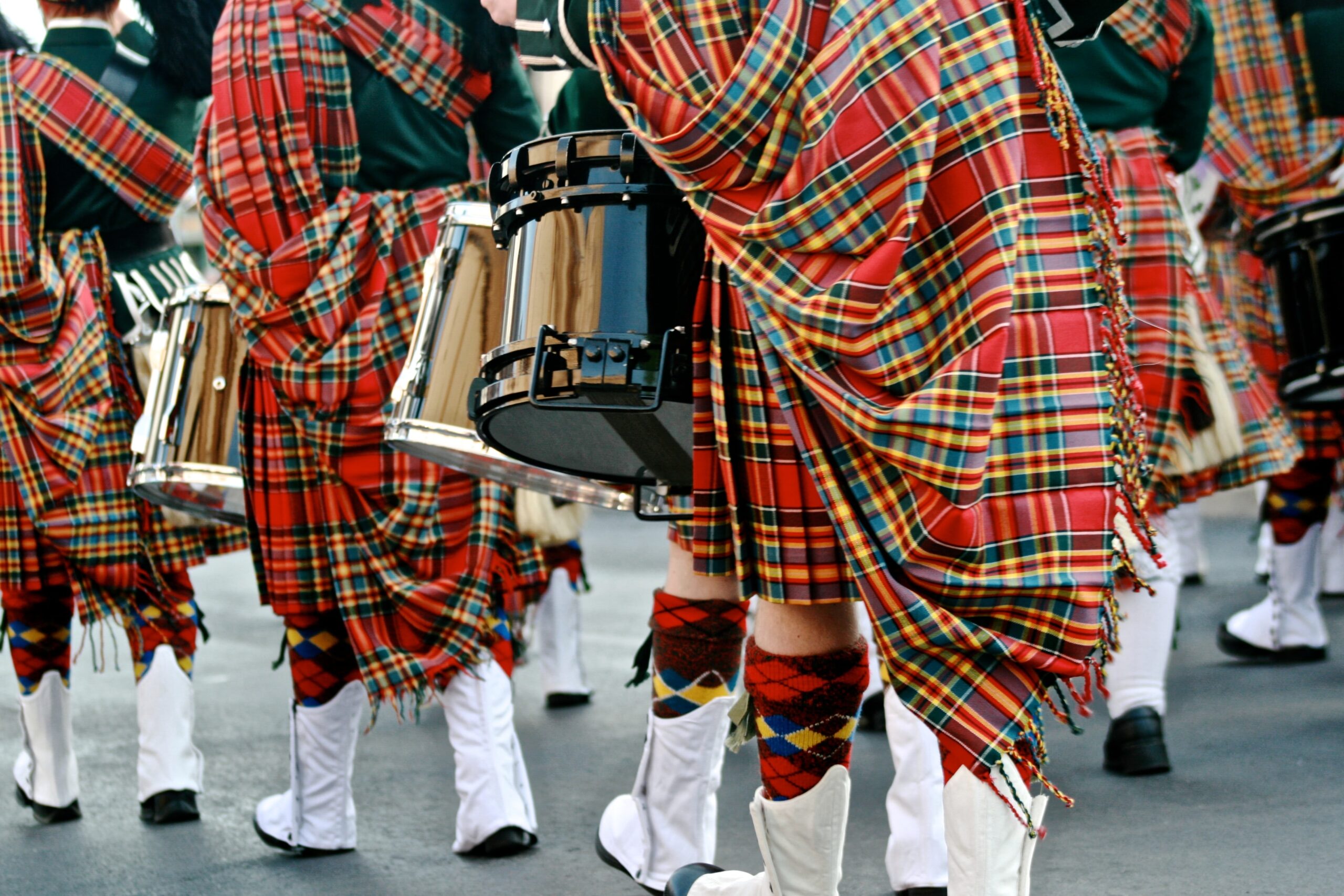
- The kilt, fairly long, fastened with a pin, with a dress sporran.
- A plain white shirt, with either a black bow tie or a lace jabot.
- A Highland jacket (also called a doublet) with ornamental silver buttons. There are several styles but they are normally made from black or dark coloured barathea, broadcloth or dark velvet. They may be worn with a waistcoat.
- Knee-length socks or stockings ('hose'), patterned, or green or red (never plain cream), secured with a silk garter (sometimes called a flash). A dagger or sgian dubh (pronounced 'ski-an doo') may be placed on the right-hand side.
- Black patent leather dancing pumps or buckled brogues are traditional. A black evening shoe is also acceptable.
Some men prefer tartan trousers, 'trews', which may be worn with a velvet smoking jacket and black tie in place of dinner jacket trousers. Trews are always cut without a side seam.
- A long dress, with a skirt full enough for dancing reels, is worn at Highland balls (eg the Skye Balls).
- White dresses are often worn with sashes, particularly at formal balls, but some wear colours or patterns.
- A tartan sash is worn diagonally. Clanswomen wear it over the right shoulder, across the breast and secured by a pin or small brooch on the right shoulder.
- The wife of a clan chief or the wife of a colonel of a Scottish regiment would wear a slightly wider sash over the left shoulder, secured with a brooch on the left shoulder.
- Non-clanswomen attending the balls should wear similar long dresses but without a sash.
It is best not to wear a specific tartan unless connected to a specific clan. Many Scottish clans have one or more tartans – typically dress tartan and hunting tartan – which may be worn by members of that clan and their wives. Daughters may continue to wear it after marriage. For Highland balls men not entitled to wear the kilt may wear black or occasionally white tie.
Lounge suit dress code is used for occasions with various degrees of formality and means a suit worn with a shirt and tie. Lounge suits are worn for most business events, both daytime and evening, and for many social events, such as lunches, receptions, dinner, weddings, christenings and funerals. Dark suits are also correct for flat racing, other than events such as Ascot. They may be worn at dinner parties, especially when people come directly from the office, but are less acceptable at country dinner parties.
A three-piece suit consists of a single-breasted jacket, a single- or double-breasted waistcoat and trousers. When wearing a singlebreasted waistcoat, the bottom button is always left undone. A two-piece suit consists of single-breasted or double-breasted jacket with trousers (no waistcoat). Belts should not be worn with a waistcoat or double-breasted suit.
A shirt with a turndown (not button-down) collar should be worn with a tie and the top button of the shirt must be done up. The most versatile tie knots are the four-in-hand and the half- Windsor; large Windsor knots should generally be avoided.
Dark suits are still seen on the older rural generation at formal or official events, such as agricultural shows, when there is a luncheon tent for members or notables, and for a day in London.
For evening events, a smart, or cocktail, dress (with sleeves or a jacket) is a suitable choice. For daytime events women should wear a day dress, trouser suit, or skirt and jacket or coat. The overall impression is not quite so formal as when the dress code is morning dress. A neat, tailored look is best for business, with length on or just below the knee. A pretty print and a looser and longer silhouette works best in the country.
If the dress code is 'lounge suits', women can alter their usual office wear, for example by opting for a smart dress underneath a fitted jacket. In the evening, the jacket can be removed. Modest heeled shoes can be changed for something higher and a few bold accessories worn. Swap a daytime bag for something smaller and more elegant for the evening.
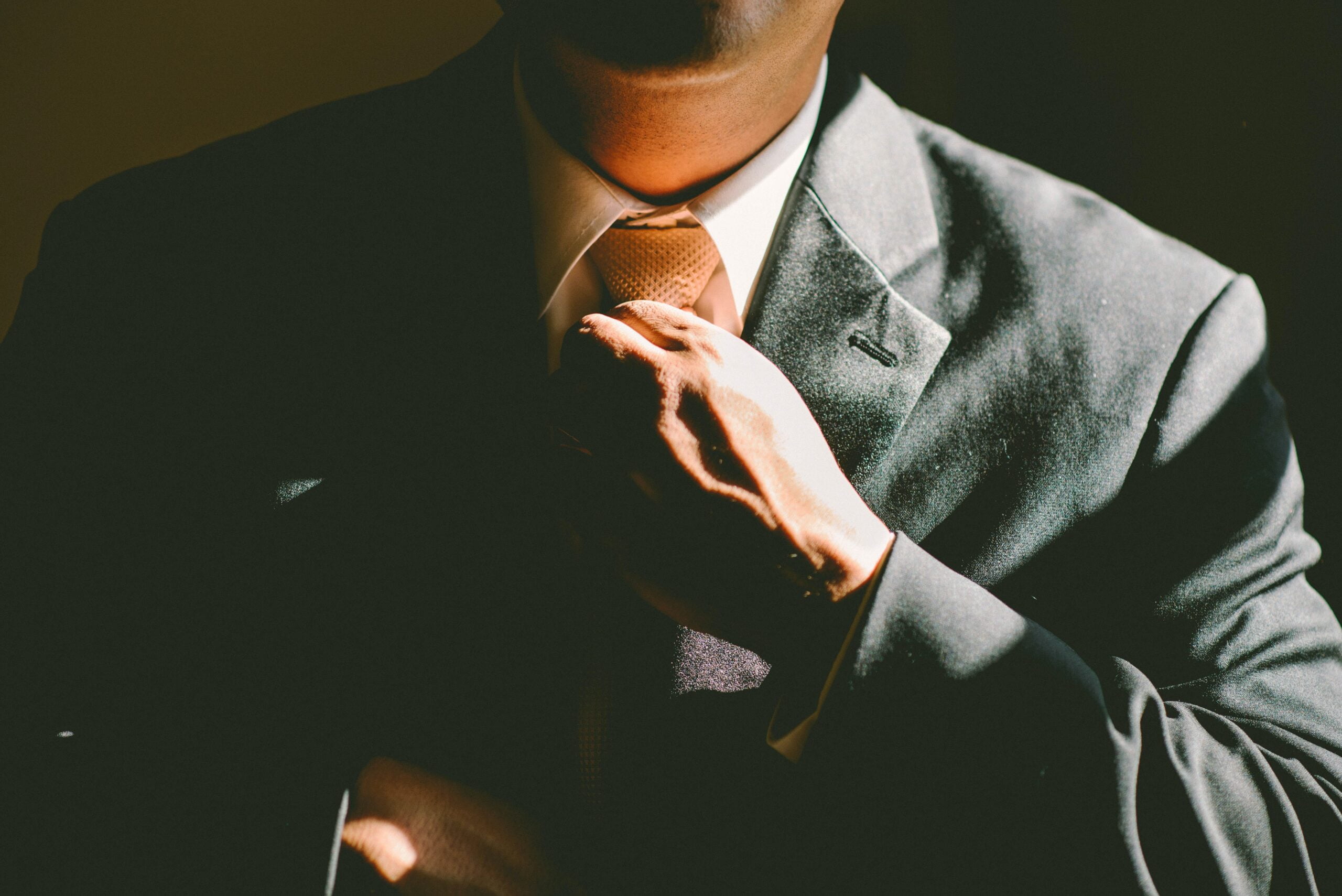
It is worth remembering that town/city events will generally be more fashionable and formal than those held in the country. Similarly, if the host or hostess is very traditional or of an older generation, then the style may be more formal.
For men, smart casual requires a jacket or blazer, flannels, needlecord trousers, or chinos (not jeans), a shirt with a collar, not a t-shirt, and smart shoes, not necessarily lace-ups, but not trainers or sandals. A sweater may be worn if it is cold. Ties are not necessary but carrying one is often a good tip, just in case. Smart casual is usually a summer dress code, but if it is winter then opt for an overcoat rather than an anorak or parka. A tweed sports jacket may take the place of a blazer and may be worn with cords or old-fashioned cavalry twill.
For 'formal' smart casual events, a smart day dress, worn with a jacket, is a safe choice for women. At more casual events, dress down a little – for example, smart trousers or a skirt, with a cardigan. Avoid wearing denim, unless it is immaculate and balanced with a tailored jacket and smart accessories. Also avoid high heels and wearing suits, as they look like business clothes. Sports clothes and sports shoes such as trainers are incorrect.
It may be worth considering the details of the invitation before asking the host or hostess for advice. It can usually be interpreted as jeans for men but smart, clean, dark-coloured jeans. Remember you are going out so change from what you have been wearing at home. Other than in high summer or on the beach, trousers are better than shorts and polo shirts better than collarless t-shirts. Just because an event is informal it is not synonymous with making no effort.
Study the invitation and dress for the occasion, the time of day and the season. Denim should be immaculate and sports or beach clothes avoided unless the occasion demands. However, too much tailoring and heels can also look wrong. If you are unsure, find out as much as possible about what other people are intending to wear and if that isn't possible ask the host or hostess. It is always more polite to the host to dress up. 'Come as you are' rarely means what it says. Be prepared to adjust your outfit at the last minute. For women, this may mean dressing down an outfit, for example swapping heels for flats, taking off dressy jewellery or removing a jacket and putting on a cardigan.
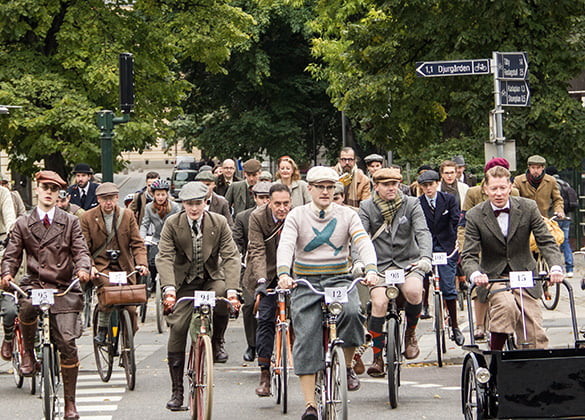
It is wise to ensure that dress is suitable for country pursuits; at the very least a walk may be a likely eventuality. It is not advisable for a woman to wear very high heels and a short tight skirt to a Sunday lunch in the country, which may include a walk. Instead jeans or cords, with a shirt or jumper, would be a more appropriate choice.
Traditionally black is still seen as a city colour, other than for funerals. Men wear brown rather than black shoes, and tweeds. Women might wear black for formal dinners or dances but not for daytime. Women would not usually wear a tailored jacket indoors in a social rather than business setting, but might choose either a gilet, or a jumper or cardigan.
Outdoors weatherproof jackets are worn in preference to woollen overcoats. Colours are muted; greens and browns are more rural than black or navy blue or anything hi-vis. Country sports, even if not practised, are the inspiration for the 'correct style'; it is worth noting, however, that the wearing of jodhpurs or hacking jackets by fashionistas may cause amusement in country circles. Dressing for an activity in which a person is not taking part is unwise; for example a man who is not actually shooting should avoid plus fours.
Scarves and woollen or fake fur hats are frequently worn by women, while flat caps for men may be worn. Walking shoes or boots are left at the door and slip-on shoes such as loafers usually worn indoors. The wearing of trainers indoors and outdoors is generally frowned upon.
Full-time country people tend to dress up for social and sporting events more than weekenders, who may take the opportunity to dress down, and this can cause clashes of dress codes. As for other dress codes, err on the side of effort and do not be afraid to ask in advance what others are going to be wearing.